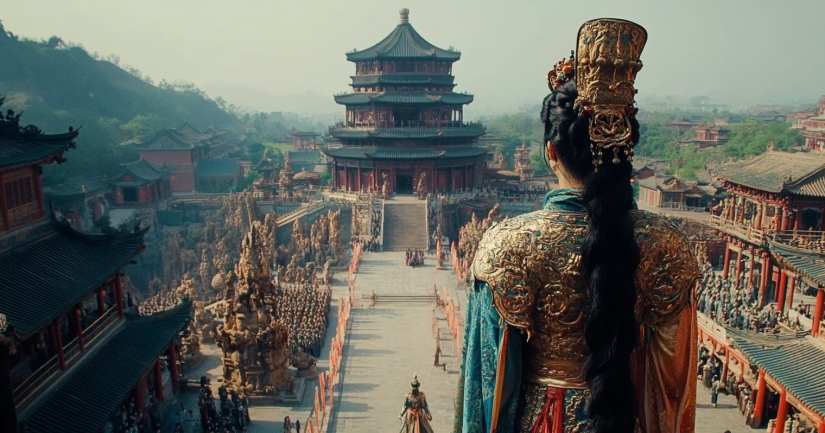
Uncover the mysteries and achievements of one of the world’s oldest civilizations with our Ancient China Quiz, Test Your Knowledge of Dynasties, Traditions, and Innovations. The Ancient China Quiz challenges your understanding of one of the most influential civilizations in history. Spanning thousands of years, ancient China shaped global culture, politics, and technological advancements. From the Xia Dynasty’s early foundations to the Ming Dynasty’s final imperial achievements, each era introduced groundbreaking changes in governance, philosophy, and warfare. Test your knowledge of China’s legendary emperors, inventions, and traditions while exploring the legacy of this remarkable civilization.
China’s dynastic history began with the Xia Dynasty (circa 2070 BCE–1600 BCE), often considered the first ruling power. Though historical records remain debated, this era introduced hereditary rule. The Shang Dynasty (1600 BCE–1046 BCE) marked the first confirmed dynasty, known for its bronze artistry and oracle bone script. The Zhou Dynasty (1046 BCE–256 BCE) introduced the Mandate of Heaven, a principle stating that rulers must govern justly or risk losing divine approval. These early dynasties shaped China’s political foundations, influencing governance for centuries.
Step back further in time and uncover the mysteries of the iconic Silk Road that linked Ancient China to the world. For a broader view, explore pivotal events with the insightful Chinese History Quiz.
Start the Ancient China Quiz Now
The Rise of Ancient Chinese Dynasties and Their Impact
Confucianism, Daoism, and Buddhism: The Philosophical Legacy of Ancient China
Philosophy played a central role in ancient China’s development. Confucianism, founded by Confucius (551 BCE–479 BCE), emphasized morality, respect, and education, shaping government and social structures. Daoism, attributed to Laozi, promoted harmony with nature and the idea of effortless action, or Wu Wei. Meanwhile, Buddhism arrived from India during the Han Dynasty, influencing religious practices, art, and daily life. These philosophies shaped personal beliefs, governance, and traditions, leaving a lasting impact on Chinese culture.
Innovations and Scientific Achievements of Ancient China
China’s scientific advancements transformed civilizations across continents. The invention of paper during the Han Dynasty (202 BCE–220 CE) revolutionized writing, record-keeping, and education. The Tang Dynasty (618–907 CE) saw the development of gunpowder, which later altered global warfare. The Song Dynasty (960–1279 CE) introduced the compass, enabling maritime exploration and international trade expansion. Silk production, a well-guarded secret for centuries, fueled China’s economy through the Silk Road, linking the East and West. These groundbreaking innovations solidified China’s reputation as a global pioneer in technology.
The Great Wall and Military Strength in Ancient China
China’s military advancements ensured the security of its empire. The construction of the Great Wall of China, initiated by Emperor Qin Shi Huang, protected against northern invasions. The Terracotta Army, buried with Qin Shi Huang, reflects the military precision of the Qin Dynasty. Advanced weaponry, including the repeating crossbow and early forms of gunpowder weapons, gave China a strategic advantage. These military innovations not only defended China’s borders but also allowed its culture and civilization to flourish without external threats.
Festivals and Traditions That Shaped Ancient China
Cultural traditions played a significant role in uniting ancient Chinese society. The Chinese New Year, rooted in centuries-old customs, celebrated renewal and prosperity with firecrackers and dragon dances. The Mid-Autumn Festival honored the moon and family unity, with mooncakes symbolizing togetherness. The Qingming Festival, also known as Tomb-Sweeping Day, reflected deep respect for ancestors as families cleaned gravesites and made offerings. These celebrations, rich in symbolism and history, continue to be observed, connecting modern China with its ancient past.
Trade, Economy, and the Silk Road’s Lasting Impact
China’s economy thrived through agriculture, silk production, and international trade. The Silk Road linked China to Europe, Persia, and India, facilitating the exchange of goods, ideas, and culture. Merchants traded silk, spices, and ceramics, contributing to China’s economic prosperity. The introduction of paper money during the Song Dynasty further advanced commerce, streamlining transactions and financial growth. These economic developments established China as a dominant force in global trade, influencing markets and trade routes for centuries.
Are You Ready to Test Your Knowledge?
Understanding ancient China means exploring the origins of its traditions, philosophies, and groundbreaking achievements. From powerful emperors to technological marvels, this civilization shaped world history in ways still evident today. Take this Ancient China Quiz to challenge your knowledge, uncover new insights, and see how well you understand one of the greatest civilizations in history.
China Quizzes – Explore the Wonders …
